Coordinate System Averaging
In Simcenter STAR-CCM+, the csavg() function allows you to average data along any direction of a specified coordinate system. Coordinate system averaging provides a two-dimensional meridional view for the three-dimensional solution. While the meridional view is commonly used in turbomachinery, it is generally suitable for applications that involve axisymmetric regions.
Given a field function , Simcenter STAR-CCM+ calculates the average of along a direction as:
The field function is integrated along isolines on a slice to obtain a two-dimensional grid of averaged values. The number of isolines on a slice is determined by the number of integration lines. The grids obtained are interpolated to sweep through the domain in the slicing direction.
To calculate the average of a field function using the csavg() function, you use the following syntax:
csavg(value, @CoordinateSystem("Laboratory"), averagingDirection, sliceDirection, numSlices, integrationsPerSlice)where:
- value is the field function being averaged (both scalars and vectors can be averaged)
- CoordinateSystem("Laboratory") is the coordinate system in use for the averaging
- averagingDirection is the averaging direction
- sliceDirection is the slice direction
- numSlices is the number of slices
- integrationsPerSlice is the number of integration lines per slice
The csavg() function does not support non-contiguous regions.
For example, to obtain the circumferentially averaged axial velocity in a user-defined cylindrical coordinate system, you can create a user-defined field function with the following expression:
csavg(${AxialVelocity}, @CoordinateSystem("Labratory.Cylindrical 1"), 1, 0, 50, 60)In this example, the slices are taken radially.
| Note | When defining the direction in cylindrical coordinates, 0 corresponds to the radial axis (along r), 1 corresponds to the circumferential axis (along theta), and z corresponds to the longitudinal axis (along z). |
The following example evaluates the axial velocites in a turbine stage, as determined by the function definition above. This is an illustrative example; to obtain 2D average views and 1D average surface plots for turbomachinary cases in Simcenter STAR-CCM+, it is recommended you create an average profile derived part. See Defining an Average Profile (Turbomachinery).
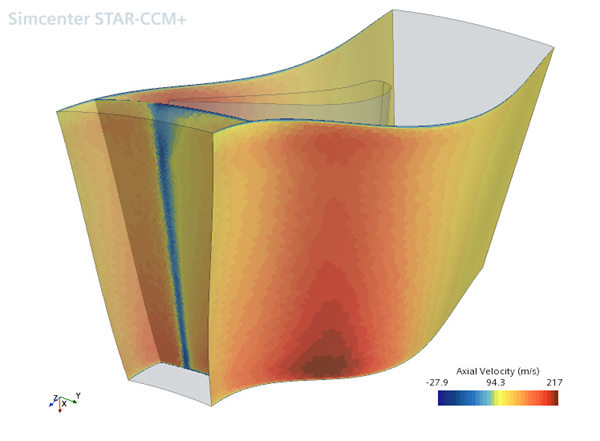
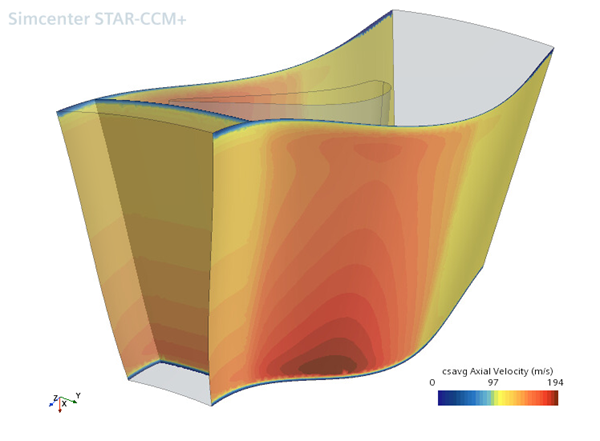
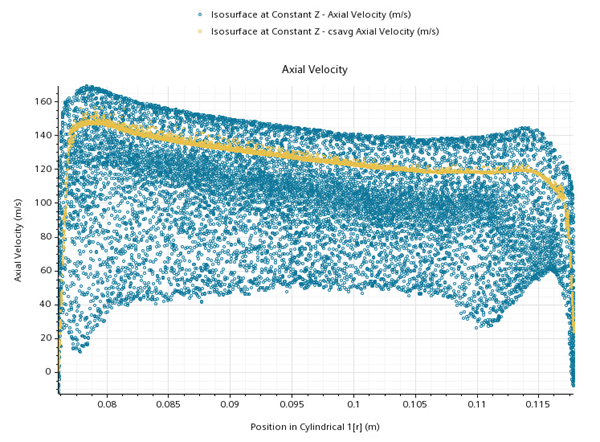
A similar plot can be obtained by creating a 1D average profile. See Defining an Average Profile (Turbomachinery)
The following examples are from a rotor case.
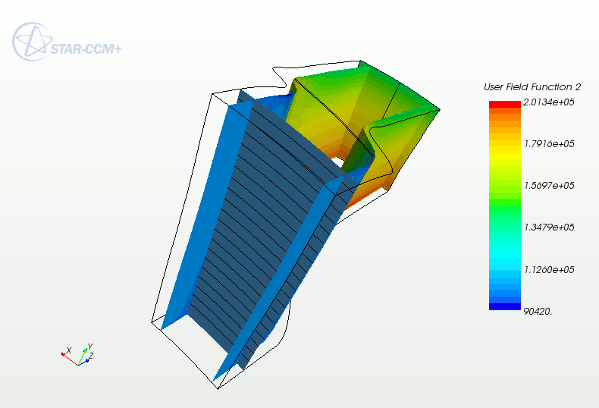
- The blue-gray plane shows a constant z slice.
- Black lines are averaging lines of constant r.
- The results from multiple slices appear in a two-dimensional average mesh.
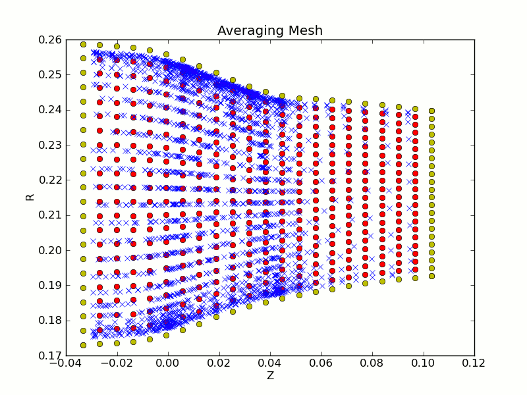
- Red dots are the resulting average mesh.
- Blue “x” symbols are the (z, r) vertices from the region projected onto this mesh.
- Green dots are extrapolated (halo) nodes from the average mesh.
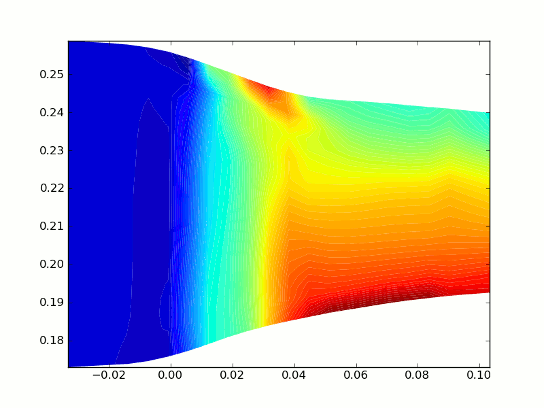
The scalar scene in the following screenshot shows the rotor case using the following user-defined field function:
csavg($AbsoluteTotalPressure, @CoordinateSystem("Cylindrical 1"), 1, 2, 20, 60)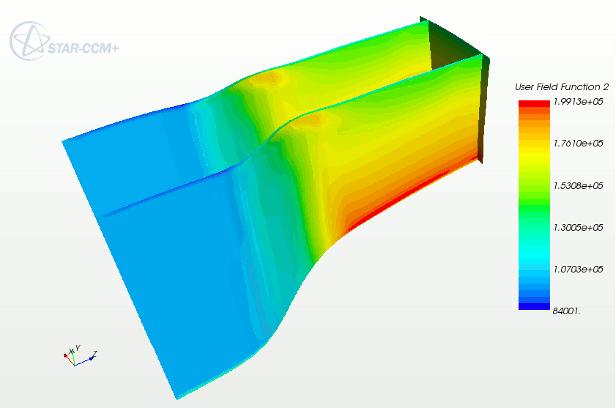
This field function takes the average of Absolute Total Pressure, using the Cylindrical 1 coordinate system in the direction, and slicing in the z direction. It uses a 20 x 60 averaging mesh -- that is, this mesh has 20 z-slices and, for each z-slice, 60 averaging lines (or r-slices).